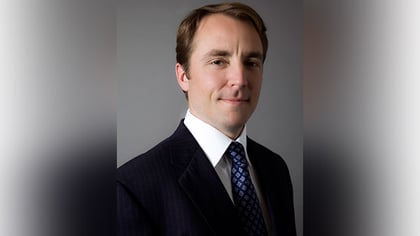Meb Faber, the contrarian money manager and witty popular blogger, has done it again: published a book of essays by some of the most successful investors and respected thought leaders in the financial arena. “The Best Investment Writing – Vol. 2” (Harriman House-August 13, 2018) is a strong, clear signal amid all the info-noise, Faber proclaims in an interview with ThinkAdvisor.
Co-founder and CEO of Cambria Investment Management, with AUM of more than $1 billion, Faber chose the pieces in the first quarter of 2018 after receiving hundreds of nominations of essays written in 2017. He chose 37 on a broad range of topics by authors including Rob Arnott, Barry Ritholtz and Larry Swedroe. Some viewpoints are 180 degrees from one another.
Faber himself doesn’t agree with every piece. In the interview, he comments on 11 of the articles.
“The Best Investment Writing”- Vol. 1” (2017) is composed of essays by Ben Carlson, Ken Fisher, Jason Zweig and 29 others.
Faber, a quant and former biotech analyst, uses a rules-based systematic approach to investing to provide low-cost alternatives to traditional buy-and-hold portfolios, which he labels “buy and hope.”
Cambria has 10 ETFs across tactical, core and value strategies. Its Digital Advisor accounts — partnered with Betterment — offer six Trinity Portfolios.
The astute Faber saw early signs of the financial crisis in January 2008, and his tactical computer models exited U.S. stocks; the following month he was out of foreign equities as well.
By 2016, he had come up with a radical strategy to reduce taxes and boost returns nearly 50% by removing the dividend in dividend investing and using a value approach instead.
(Related: Meb Faber’s Radical Dividend Investing Strategy: Avoid Dividend Stocks)
ThinkAdvisor recently conducted a phone interview with the star of “The Meb Faber Show” podcast and co-author of “The Ivy Portfolio: How to Invest Like the Top Endowments and Avoid Bear Markets” (March 2009), about risk management a.k.a. marketing timing. In releasing “The Best Investment Writing – Vol. 2,” the scholarly manager declares, from his El Segundo, California, office: “Hopefully, we’ll do more of these books every year, forever.”
Here are highlights of our conversation:
THINKADVISOR: When your partner Eric Richardson died suddenly in January, at age 50, your role expanded. Have you changed the company’s strategy?
MEB FABER: No. We set it up as a machine that kind of runs itself and could chug along without any one of us. Starting in September, we’ll turn our eyes back to the future, start launching new funds and keep coming up with more crazy ideas.
Your new book is packed with insightful essays. Let’s randomly discuss some. First: “How to Become a Professional Trader,” by Andreas Clenow, financier; CIO, ACIES Asset Management; author, “Following the Trend.” He and his colleagues wrote: “Clients will [often] invest with managers who have the highest return, but too-high return targets are a major warning signal for sophisticated investors.”
We’ve done a lot of writing on this and say, basically, that really high returns are impossible. If you return 20% a year, you quickly become one of the richest people in the world. So anything north of that is almost fantasy. A lot of marketing, of course, is about appealing to investors’ somewhat unrealistic expectations. People are attracted to shiny new objects, for sure.
“Buyback Derangement Syndrome” by Cliff Asness, managing principal, AQR Capital Management. He and colleagues wrote: Companies are using capital “raised externally versus cash on hand or liquidating potentially productive assets to fund buybacks…” [It’s a myth that] “the recent runup in prices is a result of share repurchases.”
There’s a lot of misunderstanding when it comes to buybacks. They’re simply another tool in the CEO’s toolbox, nothing more. Three of our funds are based on this theory; so we’re very positive about buybacks.
“Making Private Equity Great Again” by Dan Rasmussen, founder and portfolio manager, Verdad Capital: “Private equity has had a “lackluster track record” since 2010. But price discipline “will make private equity great again.” For example, invest in firms that “maintain strict price discipline.”
This is one of my favorite pieces in my book. There’s so much money flowing into private equity that it’s important to understand the return drivers. [Rasmussen] does a very good job of demonstrating that a lot of it is simply due to valuation.
“A Letter to Jamie Dimon” by Adam Ludwin, CEO, Chain cryptographic technology company: “Stop using the word currency” to describe crypto assets — they’re a new asset class. Most people buying crypto have checked their judgement at the door.”
We’ve been pretty consistent with our view on crypto, which is that it’s not an asset class that I’m particularly attracted to, though I’ve been somewhat of a sidelines cheerleader.









 August 29, 2018 at 06:03 PM
August 29, 2018 at 06:03 PM











